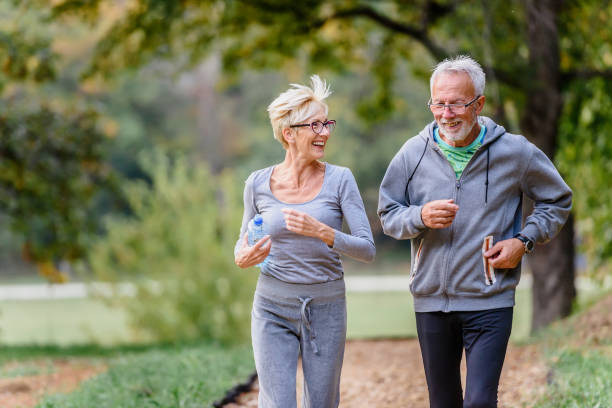We are right, but we don’t know how to do it well enough. However, there are many secrets to aging without aging. One of the most important secrets is our physical and social interactions. Most of us, including physicians, are still unaware of it, but interacting with our body and the environment, persistently maintaining relationships with the natural and social environment, and differentiating, renewing and developing these relationships as much as possible, have a tremendous impact on aging, memory and creativity. In fact, it not only influences, but almost fuels it. This does not necessarily require physical and social changes/loads/strain. Even new and persistent physical, natural and social relationships that can be simple and ordinary can curb us from aging badly even as we age. It is understood that one of the most important secrets of this work is “synaptic plasticity” / “multiplying and developing synapses”.
WHAT THE HELL ARE SYNAPSES

The term synapse is derived by combining the words “syn/along, together” and “haptein/embrace”. It mainly refers to the chemical relationships, connections, communications and hugs between cells. Apart from chemical synapses, we have many other biological synapses. Immunological/immunological synapses, electrical synapses are just some of them. But in daily health practice, synapses are mostly understood as chemical hugs/communications between nerve cells.
So, what is synaptic plasticity, what is it, how can it be improved? Let an important neuropsychiatrist, Dr. Daniel J. Levitin, explain this concept to us.
IMPORTANT INFORMATION
DEVELOP YOUR SYNAPTIC PLASTICITY FOR A COGNITIVE YOUTH

In his book “Successful Aging”, Dr. Levitin summarizes the importance of synaptic plasticity as follows “Many of the stories of those who manage to stay young despite their chronological age have to do with synaptic plasticity – the ability of the brain to form and create new relationships. Synaptic plasticity is influenced by your genetic makeup, your life experiences and the culture you live in. Also, especially as you get older (in my opinion, especially after your 50s), your daily routines (your social relationships, your job, the number, quality and diversity of the people you interact with, whether you exercise, and many other things…) also affect your synaptic plasticity.”
WHY WE NEED MORE SYNAPSES
At this point, let us briefly recall the concept of synapses: Synapses are “specialized/very special” connection points that allow our nerve cells/neurons to transmit messages to other neurons (i.e. to each other) or to non-neuron cells such as our internal glands that produce muscle or hormonal internal molecules. A neuron communicates with another neuron, muscle cell or gland through chemical activity at this junction. Synapses enable communication between nerve cells by translating electrical impulses into chemical messages.
-A NOTE-
SPEAK UP!
The number of synapses in the human brain is staggering. In childhood we have around 10 thousand trillion synapses. This number decreases as we grow older. In adulthood, it decreases to 1,000-5,000 trillion. But let us know that this decrease in the number of synapses does not mean a cognitive weakening or a loss of neurological power. It is a new programming. And thanks to this new programming, our brain actually develops and becomes stronger. The whole point is to try to maintain and develop that strength after the 50s.
REMEMBER
CHANGE AND ACTIVITY ARE ESSENTIAL AT EVERY AGE

According to Dr. Levitin, the number and quality of our synapses, i.e. our synaptic plasticity processes/power, are also profoundly affected by our daily routines as we age. In particular, we have a large body of scientific data showing that an increase in physical activity, i.e. leading an active and exercise-intensive life, improves synaptic plasticity, which in turn improves memory and cognition in general. As Dr. Levitin so eloquently summarizes, the hippocampus, the main memory center in the brain of everyone who successfully completes their 50s, can produce an average of 700 new neurons every day. Regular physical activity and exercise can further increase this neuronal production in the hippocampus. According to Dr. Levitin, especially aerobic physical activities – walking, cycling, light jogging, dancing, golf, tennis – lead to a more efficient development of snaptic plasticity in adults’ memory and a stronger cognitive recovery.
CONCLUSION
WE NEED MORE SYNAPTIC PLASTIC FOR A STRONG BRAIN
Taking the above information into consideration, let us carefully note this important relationship between snaptic plasticity and our lifestyle, especially activity/exercise. Whatever our age, let us strive to engage in more physical/physical and more frequent and varied environmental/social activities almost every day, at every opportunity. Let’s not forget that interacting with our physical and mental body and our environment is one of the most important factors determining the answer to the question “How will I age?”. Because these relationships and activities increase our synaptic plasticity, strengthen our brain’s ability to establish and create new relationships with ourselves and our environment, and keep us young and healthy at any age.




